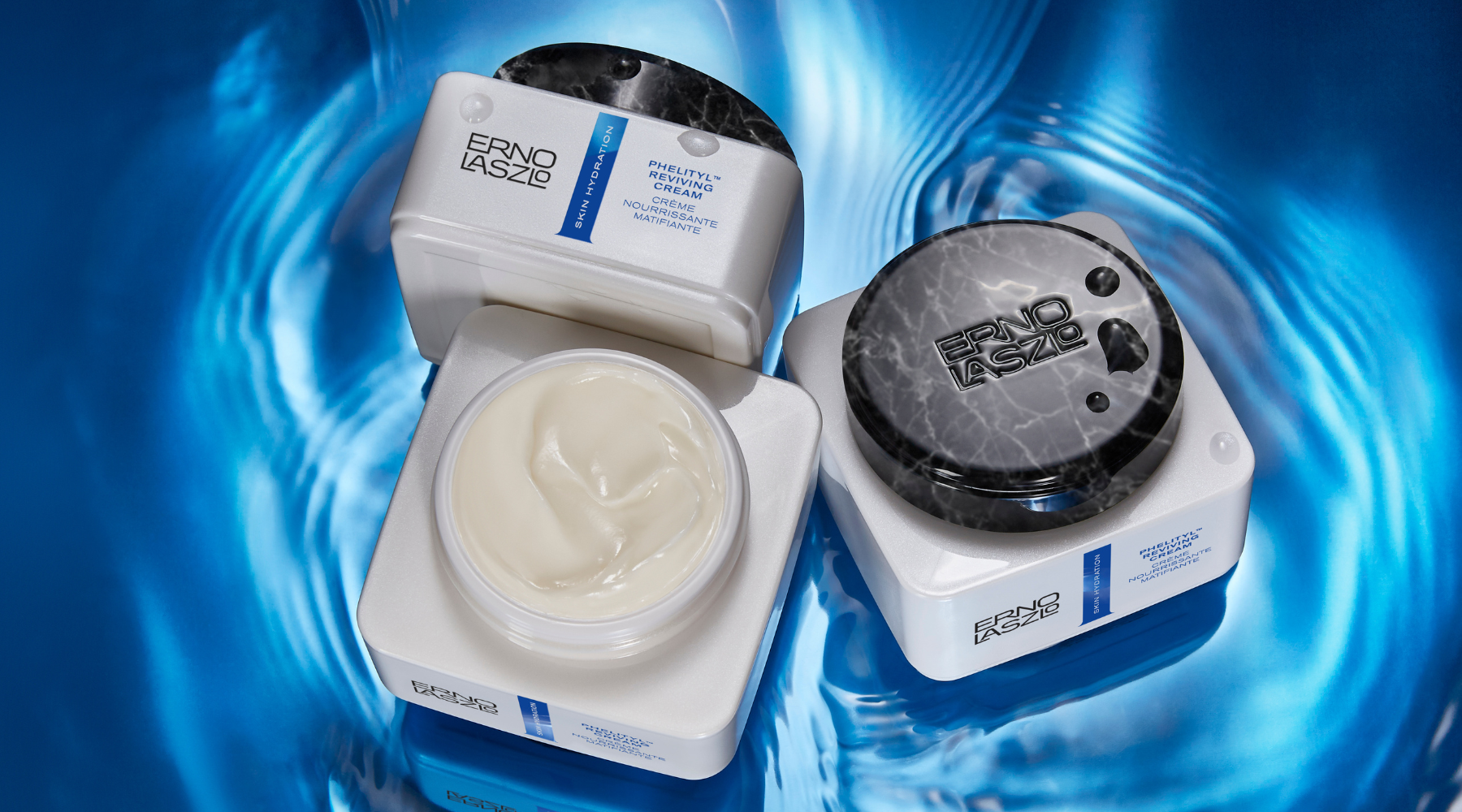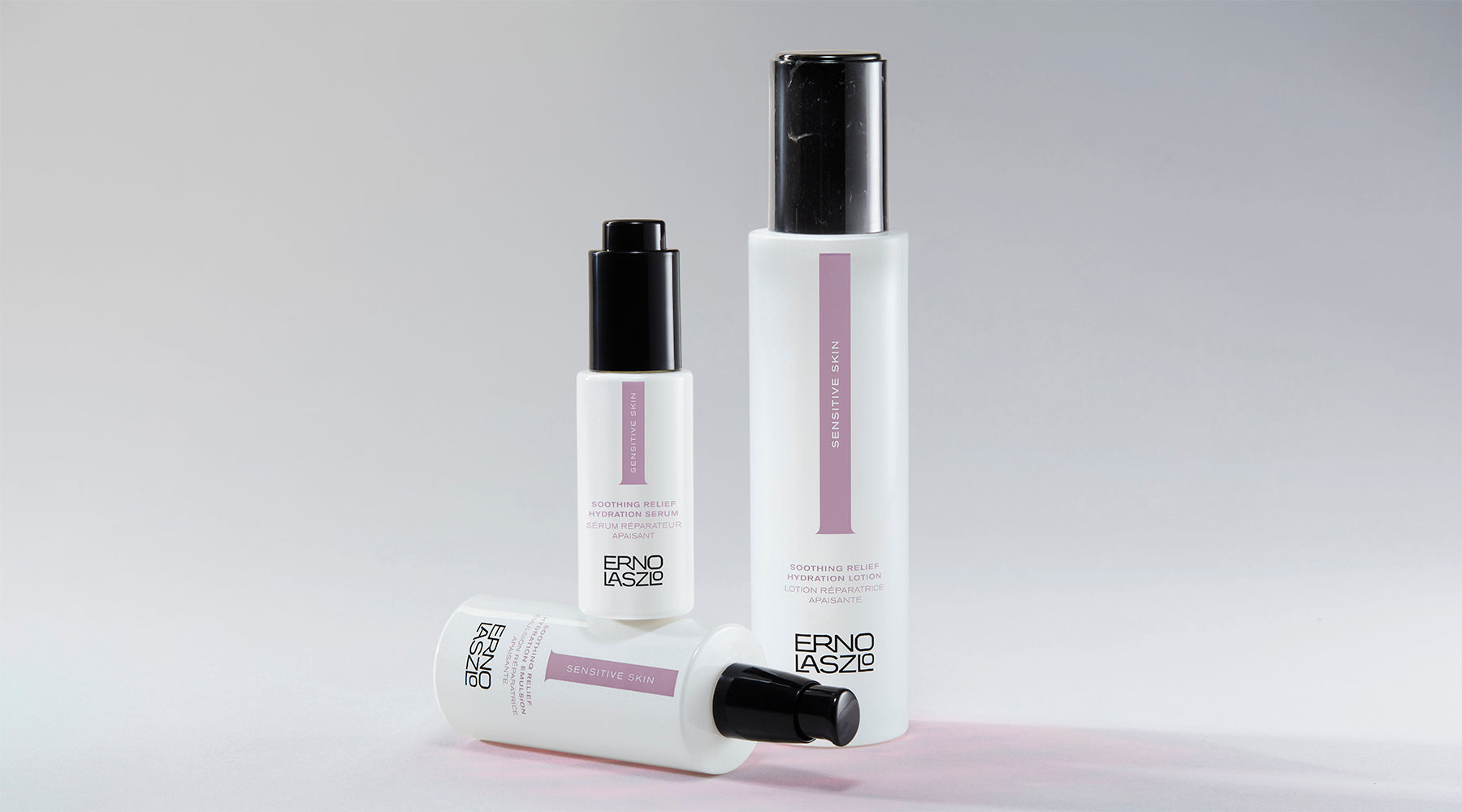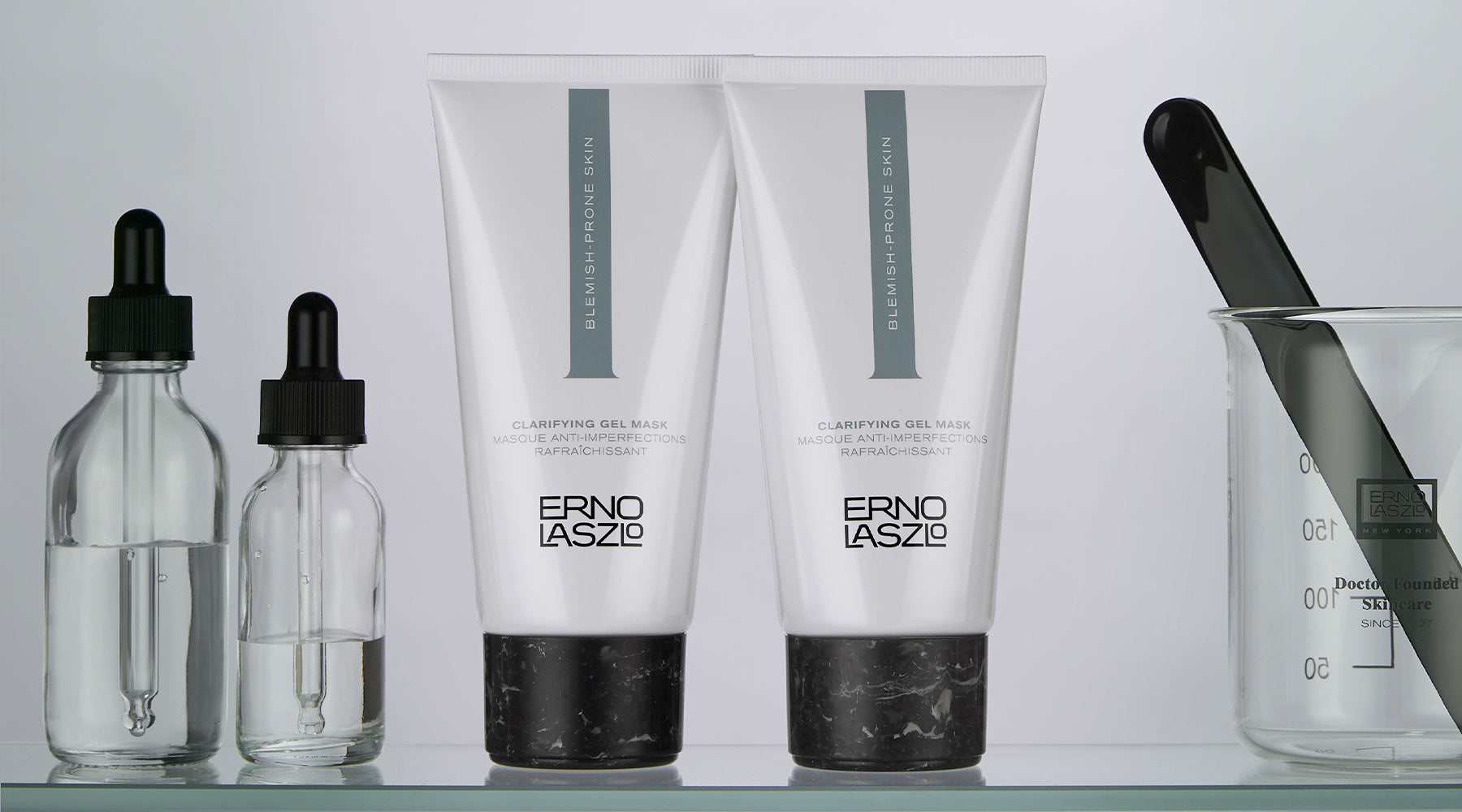
Supporting Skin Structure & Its Barrier Functions With Evidence-Based Skin Care Ingredients
The epidermis—and in particular its outermost layer, the stratum corneum—contributes much of the barrier function of the skin and is a readily visible representation of skin health (Marieb 2019). Maintaining the health of the skin barrier has arguably become more important than ever in the modern world, in which a large majority of people are exposed to environmental chemicals (Quinovic 2021; CDC 2021). These external factors can damage the integrity of the skin barrier and promote premature aging of the skin (Roberts 2021; Schachner 2023). Thus, maintaining and protecting the stratum corneum has become increasingly important.
Here, we briefly review the complex, multilayered structure of the skin and relate it to clinically translatable function, with an emphasis on the stratum corneum. In the context of epidermal structure and function, the formulation and clinical data for Phelityl® Reviving Cream will be reviewed.
Skin Homeostasis: A Brief Review of Skin Barrier Structure and Function
The functionality of the epidermis extends far beyond simply forming an interface between the body and the environment, with roles in sensation, maintaining water content, defending against and responding to infection, photoprotection, and responding to and ameliorating oxidative stress, along with crucial regulatory, metabolic, and excretory functions (Lopez-Ojeda 2022). Among all of the body’s organs, the skin is the first point of contact and is most exposed to environmental insult from microorganisms, physical injury, temperature extremes, chemical pollution, and ultraviolet (UV) light. Its remarkable ability to self-repair is an essential element of healthy skin function for people of all ages, and progressive compromise of the skin barrier is common as individuals age, as well as in patients with dermatologic and certain systemic disorders (Roberts 2021).
The most superficial layer of the epidermis—and the one that is largely responsible for the appearance of the skin to the observer and the main contributor to the skin barrier function—is the stratum corneum (Marieb 2019) (Figure 1). Only 10 to 20 µm thick, (Sandby-Møller 2003), the stratum corneum is composed of up to 30 layers of metabolically inactive, keratin-filled corneocytes that are shed at a rate approaching 50,000 cells per minute (Marieb 2019). The spaces between these cells are filled with a lipid-laden extracellular matrix. Far from being just a dead, dry layer, the healthy stratum corneum also contains about 20% to 25% water under average conditions, with water content changing dynamically in response to the humidity of the environment and the use of topical products (Murthy 2010).

The stratum corneum has a “brick-and-mortar” composition, with the corneocytes forming the bricks and the extracellular matrix forming the mortar (Figure 2) (Kim 2020). The corneocytes are connected by corneodesmosomes that contribute to its resistance to mechanical stressors and selective permeability (Kim 2020). It is primarily composed of protein (75%-80%) and is rich in a variety of lipids that provide structural support and act as a barrier (Knox 2021). The extracellular space is a mixture of ceramides, cholesterol, and non-esterified fatty acids in approximately a 3:1:1 ratio (Knox 2021; Del Rosso 2011). Collectively, the relative composition of these lipids is critical for maintaining skin hydration and regulating transepidermal water loss (TEWL) (Del Rosso 2011).

Along with ceramides, fatty acids, and cholesterol, the stratum corneum contains natural moisturizing factor, which is a mixture of small, water-soluble compounds derived from filaggrin, sweat constituents, and triglyceride turnover in the sebaceous glands (Gunnarsson 2021). These compounds make up approximately 10% of the dry weight of corneocytes and include a range of amino acids and amino acid derivatives, including pyrrolidone carboxylic acid, urocanic acid, lactic acid, sugars, urea, glycerol, and various ions (Gunnarsson 2021).
Lipids supplied by the sebum—produced by sebaceous glands—are also present on the skin surface. Sebum consists of squalene, triacylglycerols, and wax esters and is present at the highest levels on the forehead, upper chest, and upper back (Knox 2021). Squalene, an intermediate in cholesterol biosynthesis, is a particularly potent natural emollient that is efficiently absorbed deep into the skin, maintaining its suppleness and flexibility (Huang 2009). Squalene also has a protective role, quickly neutralizing free radicals and protecting the skin against oxidative damage (Huang 2009).
Normal Functions of the Stratum Corneum
The main functions of the stratum corneum include providing a selectively permeable barrier, protecting against UV light, serving as the first line of defense against pathogens and initiating the immune response to these microorganisms, quenching free radicals, and serving as a home for a diverse array of commensal skin microbiota.
Barrier and homeostatic functions: The most commonly understood function of the skin is to act as a selectively permeable physical barrier between the
internal and external environment. The multiple layers of corneocytes that comprise the bricks of the stratum corneum, together with the glycolipids that serve as the mortar, maintain proper cutaneous water balance by preventing excess TEWL (Woodby 2020). Healthy skin is critical for maintaining body temperature to avoid uncontrolled water and solute loss (Marieb 2019).
Photoprotection: The skin barrier is the primary site of exposure to UV radiation, and solar UV radiation (primarily UVA and UVB) is the primary driver of skin photoaging (Markiewicz 2019). Damage to the skin by UV radiation can be mediated by direct absorption of radiation by nuclear DNA, causing specific mutations in the skin genome. Indirect damage also may occur as a result of UV absorption into other skin constituents, the generation of reactive oxygen species, and the resulting formation of DNA photoproducts, in addition to characteristic alterations in cellular proteins and membranes (Markiewicz 2019). The skin contains an exquisite set of enzymatic pathways to continuously repair the damage caused by UV radiation and other environmental insults. Without proper care, the skin accumulates UV damage over time, leading to manifestations ranging from benign damage (wrinkling) to cancers (Markiewicz 2019).
2014; Nguyen 2019).
Antioxidant: UV radiation, air pollution, and other environmental pollutants are well-understood to cause oxidative stress. After entering the skin as nanoparticles, air pollutants can produce reactive oxygen species that negatively impact the enzymatic and nonenzymatic activities of the skin and stimulate the release of proinflammatory mediators, among other negative effects (Roberts 2021). The skin contains an endogenous network of enzymatic and nonenzymatic systems to counter oxidative stress by quenching free radicals generated by environmental insults (Del Rosso 2011).
Host to the skin microbiota: The skin also hosts a diverse array of bacteria, fungi, and viruses that collectively compose the skin microbiota, the composition of which varies substantially depending on the local physiology of the skin (Byrd 2018). Commensals on the skin surface actively prevent colonization by pathogenic microbes; furthermore, evidence suggests that there is crosstalk between the immune system and microbiota to assist in the maintenance of the normal microbial composition of the skin and eliminate pathogens (Byrd
2018). The normal microbiota not only defends against potentially harmful microorganisms but can also produce substances that are directly beneficial for the skin. For example, data suggest that commensal Staphylococcus epidermidis produces protective ceramides that contribute to skin barrier homeostasis, and thus help to prevent skin dehydration and aging (Zheng 2022).
Importance of Maintaining the Skin Barrier
As discussed, the skin barrier is both a multifunctional structure with critical roles in defending against environmental assault and homeostasis, as well as the structure that reflects our outward appearance to the world. Many of the functions of the epidermal barrier are the responsibility of the stratum corneum; thus, maintaining the stratum corneum is a priority for overall skin health. In addition to exogenous factors, aging has been shown to compromise the integrity of the stratum corneum, with changes in its biomechanical properties including stiffening of keratin fibers, increased cellular cohesion, and decreases in water movement through the stratum corneum (Biniek 2015). Levels of all 3 major classes of skin lipids—ceramides, cholesterol, and free fatty acids—also decline significantly with age, leading to compromise of the barrier function of the skin (Rogers 1996). Furthermore, the pH of the stratum corneum tends to increase with age, which has been shown to increase serine protease activity and reduce corneodesmosome density (Choi 2007).
Several modifiable risk factors for poor skin barrier function can be readily addressed with appropriate routine skin care, including gentle cleansing and use of topical products designed to moisturize and support skin barrier function and avoiding unnecessary environmental exposure, the use of irritating topical products, and extended exposure to low-humidity environments (Del Rosso 2016). Conversely, without proper attention, the integrity of the stratum corneum can be compromised, leading to both visible and invisible manifestations such as dry, flaky skin, itching, and irritation.
Phelityl® Reviving Cream
The science underlying the structure and function of the skin barrier was carefully considered in the development of Erno Laszlo’s Phelityl® Reviving Cream. Central to the product formulation is the Phelityl® Complex, a blend of botanical substances with evidencebased benefits on skin barrier health, which was combined with other ingredients to support the skin barrier and enhance hydration.
Phelityl® Reviving Cream Key Components
- Phelityl® Complex
- Biobotanical blend
- Acacia gum biopolymer
- Plant-derived polyglycerides
- Rosehip oil
- Squalane
- Ceramides
- Red algae
- African tree and oleanolic acid blend
- Glycerin
Phelityl® Complex
The Phelityl® Complex is composed of a blend of botanical substances, including acacia gum biopolymers, plantderived polyglycerides, and rosehip oil, along with squalane and ceramides.
Acacia gum (also known as gum Arabic) is an exudate gum produced by the Acacia senegal tree and a primary ingredient in Phelityl® Complex. Acacia gum is among the oldest substances used by humans, with the first recorded use over 5000 years ago. In clinical studies, acacia gum was shown to improve skin barrier and hydration (Data on File).
The plant-derived polyglycerides and rosehip oil in the Phelityl® Complex each contribute EFAs to the formula. The mixture of polyglycerides is of 100% vegetable origin and includes oleic, linoleic, and linolenic fatty acids, the latter 2 of which are the parent fatty acids of the omega-6 and omega-3 series of EFAs (Linus Pauling 2024). Rosehip oil, an extract prepared from Rosa damasca, contains high amounts of essential polyunsaturated fatty acids derived from linoleic, linolenic, and arachidonic acids (Kutaitiene 2020).
Squalene is a triterpene intermediate in the cholesterol biosynthesis pathway (Huang 2009). In humans, squalene is present in the highest concentrations in the skin, where it is produced in abundance by the sebaceous glands and constitutes approximately 13% of sebum (Huang 2009). Squalane, a hydrogenated derivative of squalene, is a powerful emollient and is absorbed into the skin, where it plays an important role in maintaining the suppleness and flexibility of the skin (Huang 2009). Beyond its emollient properties, squalane, sourced from renewable sugarcane, contributes to the ability of Phelityl® Reviving Cream to limit TEWL (Huang 2009).
Finally, the Phelityl® Complex contains a ceramide blend. Ceramides are the predominant lipid in the stratum corneum and act to maintain skin moisture (Dragicevic 2015; Knox 2021).
Additional Key Constituents of Phelityl® Reviving Cream
Phelityl® Reviving Cream contains an extract from red algae (Porphyridium cruentum). The marine exopolysaccharide derived from this organism contributes to the long-lasting moisturizing properties of Phelityl® Reviving Cream, and its high molecular mass contributes to its film-forming properties, which together help to preserve and maintain skin hydration for extended periods (Data on File; Mourelle 2017; The Derm Review 2024).
In addition to red algae, Phelityl® Reviving Cream contains a blend composed of extracts from the African Tree (Enantia chlorantha) in combination with oleanolic acid. In particular, extracts from this plant have been reported to regulate sebocyte differentiation and proliferation and to mildly inhibit 5α-reductase activity in the skin, leading to a reduction in sebum secretion (Data on file). Finally, glycerin, a natural humectant, contributes to the hydration of the stratum corneum and may protect against skin irritants (Milani 2017).
Phelityl® Reviving Cream: Clinical Study Results
The effect of Phelityl® Reviving Cream on key skin parameters was evaluated in a study in which female subjects (N=31) aged 20 to 60 years who were predominantly of combination face skin type applied the product twice daily for 56 days.
The use of Phelityl® Reviving Cream was associated with statistically significant improvements in a broad range of parameters, including skin barrier (TEWL), hydration, and sebum on the skin surface, while helping maintain a physiologic acidic skin pH (Data on file, Erno Laszlo 2024). Specifically, there were statistically significant results including a decrease in TEWL (P<0.0001), an increase in hydration (P<0.0001), and a decrease in skin surface sebum (P<0.0001) compared with baseline. The skin’s acidic pH was maintained with no change throughout the study. On the forearm portion of the study for assessing hydration, when comparing treated and untreated areas, there were statistically significant increases in hydration immediately after application (P<0.0001) and after 24 hours following a single application (P<0.0001). In the subject questionnaire, 97% of the subjects reported that their skin felt hydrated after use, 90% reported that the product left a soft matte finish, and all the subjects were satisfied with the results.
Conclusions
Complex and multilayered, the skin performs a multitude of essential functions. The health of the stratum corneum is at considerable risk in today’s environment, with people exposed more than ever before to air pollution and environmental chemicals that can damage its structural and functional integrity (Roberts 2021; Schachner 2023). It is clear that preserving the epidermal barrier—the stratum corneum—is a priority for proper skin function and appearance. Carefully formulated topical products that have long-lasting moisturizing properties and can potentially optimize skin barrier health are an important way to support overall skin health.
Phelityl® Reviving Cream is formulated with ingredients that have synergistic benefits that, together, help strengthen the skin barrier and maintain skin hydration. The effects of Phelityl® Reviving Cream were confirmed in a study in which Phelityl® Reviving Cream was shown to be associated with improvements in both immediateand long-term parameters, including a significant positive effect on the skin barrier and immediate and long-lasting hydration. Phelityl® Reviving Cream also had a statistically significant, effect on skin-surface sebum, consistent with subject reports that the product left a soft-matte finish to their skin. Together, these results indicate that Phelityl® Reviving Cream provides important skin benefits including supporting the skin barrier and enhancing hydration, to help maintain healthy looking skin.
References
Biniek K, Kaczvinsky J, Matts P, et al. Understanding age-induced alterations to the biomechanical barrier function of human stratum corneum. J Dermatol Sci. 2015;80:94-101.
Byrd AL, Belkaid Y, Segre JA. The human skin microbiome. Nat Rev Microbiol. 2018;16:143-155.
Cartron ML, England SR, Chiriac AI, et al. Bactericidal activity of the human skin fatty acid cis-6-hexadecanoic acid on Staphylococcus aureus. Antimicrob Agents Chemother. 2014;58:3599-609.
Centers for Disease Control. Fourth National Report on Human Exposure to Environmental Chemicals. Updated tables, March 2021. Accessed March 12, 2024. https://ecologycenter.org/wp-content/uploads/2021/04/FourthReport_
UpdatedTables_Volume2_Mar2021-508.pdf
Cha HJ, He C, Zhao H, et al. Intercellular and intercellular functions of ceramides and their metabolites in skin. Int J Mol Med. 2016;38:16-22.
Choi E-H, Man M-Q, Xu P, et al. Stratum corneum acidification is impaired in moderately aged human and murine skin. J Invest Dermatol. 2007;127:2847-2856.
Del Rosso J, Zeichner J, Alexis A, et al. Understanding the epidermal barrier in health and compromised skin: clinically relevant information for the dermatology practitioner: proceedings of an expert panel roundtable meeting.
J Clin Aesthet Dermatol. 2016;9(4 suppl 1):S2-S8. Del Rosso JQ, Levin J. The clinical relevance of maintaining the functional integrity of the stratum corneum in both healthy and disease-affected skin. J Clin Aesthet Dermatol. 2011;4:22-42.
Dragicevic N, Maibach HI, eds. Percutaneous Penetration Enhancers Chemical Methods in Penetration Enhancement: Drug Manipulation Strategies and Vehicle Effects. Springer; 2015:3-11.
Gunnarsson M, Mojumdar EH, Topgaard D, et al. Extraction of natural moisturizing factor from the stratum corneum and its implication on skin molecular mobility. J Colloid Interface Sci. 2021;604:480-491.
Hansen AE, Haggard ME, Boelsche AN, et al. Essential fatty acids in infant nutrition. III. Clinical manifestations of linoleic acid deficiency. J Nutr. 1958;66:565-576.
Harding CR. The stratum corneum: structure and function in health and disease. Dermatol Ther. 2004:17(suppl 1):6-15.
Huang Z-R, Lin Y-K, Fang J-Y. Biological and pharmacological activities of squalene and related compounds: potential uses in cosmetic dermatology. Molecules. 2009;14:540-554.
Higdon J. Essential fatty acids. Linus Pauling Institute. 2003. Updated May 2019. Accessed March 12, 2024. https://lpi.oregonstate.edu/mic/other-nutrients/essential-fatty-acids
Juginović A, Vuković M, Aranza I. Health impacts of air pollution exposure from 1990 to 2019 in 43 European countries. Sci Rep. 2021;11:22516.
Khynykin D, Miner JH, Jahnsen F. Role of fatty acid transporters in epidermis: implications for health and disease.Dermatoendocrinol. 2011;32:53-61.
Kim B, Cho H-E, Moon SH, et al. Transdermal delivery systems in cosmetics. Biomed Dermatol. 2020;4:10.
Knox S, O’Boyle NM. Skin lipids in health and disease: a review. Chem Phys Lipids. 2021;236:105055.
Kulaitienė J, Medveckienė B, Levickienė D, et al. Change in fatty acids content in organic rosehip (Rosa spp.) seeds during ripening. Plants (Basel). 2020;9:1793.
Lopez-Ojeda W, Pandey A, Alhajj M, et al. Anatomy, skin (integument) In: StatPearls [Internet]. StatPearls Publishing; 2024.
Markiewicz E, Idowu OC. DNA damage in human skin and the capacities of natural compounds to modulate bystander signaling. Open Biol. 2019;9:190208.
Marieb EN, Hoehn K. Human Anatomy & Physiology. 11th ed. Pearson Education Ltd; 2019.
Milani M, Sparavigna A. The 24-hour skin hydration and barrier function effects of a hyaluronic 1%, glycerin 5%, and Centella asiatica stem cells extract moisturizing fluid: an intra-subject, randomized, assessor-blinded study. Clin Cosmet Investig Dermatol. 2017;10:311-315.
Mourelle ML, Gomez CP, Legido JL. The potential use of marine microalgae and cyanobacteria in cosmetics and thalassotherapy. Cosmetics. 2017;4:46.
Murthy SN, Shivakumar HN. Topical and transdermal drug delivery. In: Kulkarni VS, ed. Handbook of Non-Invasive Drug Delivery Systems. Elsevier Inc.; 2010:1-36.
Nguyen AV, Soulika AM. The dynamics of the skin’s immune system. Int J Mol Sci. 2019;20:1811.
Prottey C, Hartop PJ, Press M. Correction of the cutaneous manifestations of essential fatty acid deficiency in man by application of sunflower-seed oil to the skin. J Invest Dermatol. 1975;64:228-234.
Roberts W. Air pollution and skin disorders. Int J Womens Dermatol. 2020;7:91-97.
Rogers J, Harding C, Mayo A, et al. Stratum corneum lipids: the effect of ageing and the seasons. Arch Dermatol Res. 1996;288:765-770.
Sandby-Møller J, Poulsen T, Wulf HC. Epidermal thickness at different body sites: relationship to age, gender, pigmentation, blood content, skin type, and smoking habits. Acta Derm Venereol. 2003;83:410-413.
Schachner L, Alexis A, Andriessen A, et al. The importance of a healthy skin barrier from the cradle to the grave using ceramide-containing cleansers and moisturizers: a review and consensus. J Drugs Dermatol. 2023;22:SF344607s3-
SF344607s14.
The Derm Review. Marine extracts in skin care. December 10, 2022. Accessed February 12, 2024. https://thedermreview.com/marine-extracts-skin-care/
Woodby B, Penta K, Pecorelli A, et al. Skin health from the inside out. Annu Rev Food Sci Technol. 2020:11:235-254.
Zheng Y, Hunt RL, Villaruz AE, et al. Commensal Staphylococcus epidermidis contributes to skin barrier homeostasis by generating protective ceramides. Cell Host Microbe. 2022;30:301-313.e9




Leave a comment
This site is protected by hCaptcha and the hCaptcha Privacy Policy and Terms of Service apply.